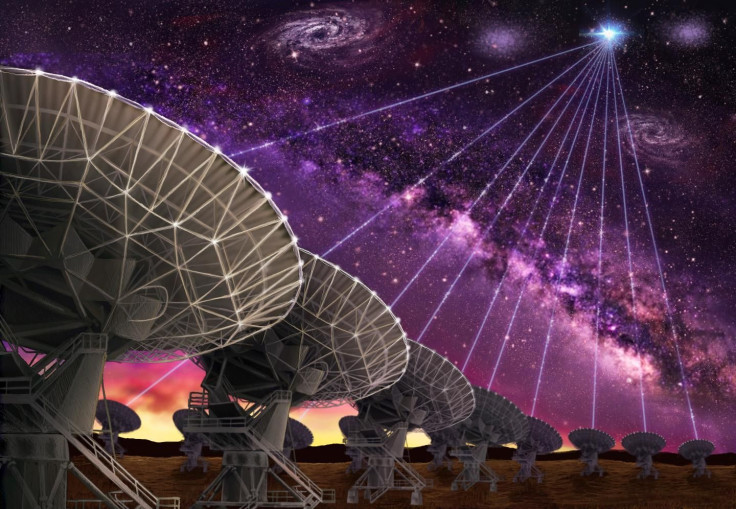Astronomers Discover A Fast Radio Burst That's Even Stranger Than Ones Detected Before

A study revealed last week a team of scientists discovered a Fast Radio Burst that is unusual even by the standards used to judge FRBs. This mysterious flash of high-energy burst, called FRB 150215, was detected in February 2015 using the Parkes radio telescope in Australia.
The observations described in the study available on the preprint server arXiv.
Read: Astronomers Discover Three New Fast Radio Bursts
“The burst was followed-up with 11 telescopes to search for radio, optical, X-ray, gamma-ray and neutrino emission. Neither transient nor variable emission was found to be associated with the burst and no repeat pulses have been observed in 17.25 hours of observing,” the researchers wrote in the study.
FRBs have baffled scientists ever since the first one was discovered in archived data in 2007. The longstanding mystery of their origin, which is further compounded by the fact only about two dozen such events have ever been detected, has spawned a plethora of scientific (and some that sound not so scientific) theories, including the occasional speculation that aliens are responsible for them.
Scientists believe that understanding the origin and nature of FRBs could even provide invaluable information about the cosmic web — the swirling, diffuse and faint web of gases and magnetic fields that exists between galaxies, and which is completely invisible to optical and most radio telescopes.
For some reason, FRBs never seem to repeat, and, as a result, most theories about the origin of these mysterious pulses involve invoking cataclysmic incidents that destroy their source, for instance, a star exploding in a supernova, or a neutron star collapsing into a black hole.
This changed in 2012 when the first and only known repeating burst, named FRB 121102, was discovered by scientists at the Arecibo Observatory in Puerto Rico. And, in January, over four years and several recurring bursts of this FRB later, astronomers were able to directly trace the mysterious burst to its point of origin, a dwarf galaxy 3 billion light-years from Earth.
So far, this is the only FRB whose source has been pinpointed — although even that hasn’t brought scientists any closer to understanding what birthed it.
What makes the discovery of FRB 150215 even more fascinating is that scientists shouldn’t even have been able to detect it in the first place. This is because the region of the Milky Way scientists passed through on its way to Earth is thought to be incredibly dense — a region that should have thrown up a lot of magnetic interference and changed the polarization of its light.
We found this FRB in real-time (*right when it happened*) at Parkes on 15 February, 2015. It looks like this (super zoomed in): pic.twitter.com/6IEBmxnvQ7
— Dr. Emily Petroff (@ebpetroff) May 9, 2017
The researchers believe that the reason for this unexpectedly low interference is that the FRB passed through some kind of “hole” where the density was anomalously low.
“I have to say this is a fantastic paper but it is a bummer of a paper,” Shami Chatterjee, senior research associate at the Cornell Center for Astrophysics and Planetary Science, told Gizmodo. “They threw every resource that we have at this FRB. They followed up with TNT, ANTARES, The Australian Telescope, Swift, Chandra, Magellan, the Dark Energy Camera, GMRT, Lovell, the VLA, and they see nothing. It is incredibly important in the sense that even with relatively prompt follow-up there isn’t an afterglow or counterpart that is obvious.”
© Copyright IBTimes 2024. All rights reserved.












